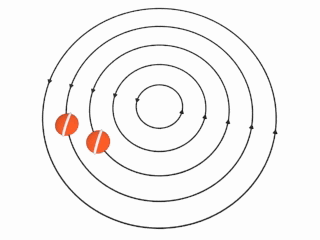Posted on 01/19/2007 10:43:46 PM PST by neverdem
| Close window |
|
||||||||||||
Ping.
It's always something. This is bad stuff!
ping
My wife's an RN and advises this stuff is the nastiest.
The Staphylococcus aureus Panton Valentine leukocidin (PVL) is a pore-forming toxin secreted by strains epidemiologically associated with the current outbreak of community-associated methicillin-resistant Staphylococcus aureus (CA-MRSA) and with the often lethal necrotizing pneumonia. To investigate the role of PVL in pulmonary disease, we tested the pathogenicity of clinical isolates, isogenic PVL-negative and PVL-positive S. aureus strains, as well as purified PVL, in a mouse acute pneumonia model. Here we show that PVL is sufficient to cause pneumonia and that the expression of this leukotoxin induces global changes in transcriptional levels of genes encoding secreted and cell-wall-anchored staphylococcal proteins, including the lung inflammatory factor staphylococcal protein A (Spa).
Thanks, neverdem.
Cheers!
Interesting. Now that a toxin has been identified, it *may* be possible to design a vaccine for it. So many lives could be saved...
I was just telling my son about a case I recently read about, where a 17 year old boy caught the flu, which led to him getting a fatal pneumonia caused by MRSA. It was so tragic.
Ping... (Thanks LucyT!)
Gig 'Em!
Thanks for the ping!

Wait! ... What happened? Were we caught in a time warp?
Check out the date of my original ping.
[Not that it's a problem.]
Maybe I can blame the satellite link?
You’re welcome, Alamo-Girl!
Vanco drops those platelet counts,
What caught my eye in this is the observation, “The PVL toxin also boosted expression of several S. aureus proteins that could promote virulence. One of these is similar to proteins that make bacteria stickier, allowing them to colonize tissues more effectively.”
“Stickier”, as far as cell adhesion goes, is a critical factor in virulence. During the black plague of the 17th Century, one small village in England developed a genetic mutation which made their cells “smoother”, so that if both parents had the mutation, their children were effectively immune to the plague. And, as it turned out, hundreds of years later, also immune to HIV-AIDS.
Importantly, we know of some substances that can temporarily make our cells “smoother”, significantly reducing the speed of an infection thus giving our immune system more opportunity to overcome the pathogen.
For example, it is known that a high concentration of cranberry juice can block viral and bacterial adhesion of some kinds of viruses and bacteria that cause bladder infections and diarrhea.
However, lung tissue is a lot harder to protect. Hopefully some chemical agent will be devised that will reduce viral and bacterial adhesion in the lungs.
Fortunately there is a lot of ongoing research in just that.
Disclaimer: Opinions posted on Free Republic are those of the individual posters and do not necessarily represent the opinion of Free Republic or its management. All materials posted herein are protected by copyright law and the exemption for fair use of copyrighted works.